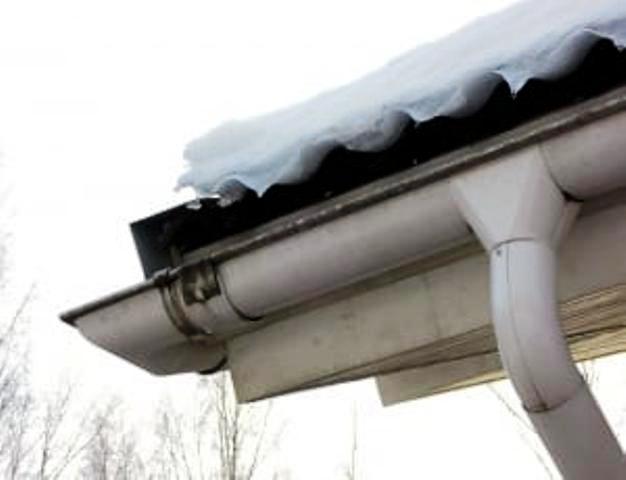Summary
– Gutter hook materials and dimensions
– Gutter hook: several types of fasteners
– Gutter hook installation: strict rules
A gutter system is made up of elements that each contribute to the proper collection of rainwater:
– the horizontal collection system,
– the gutter sealing elements,
– gutter hooks,
– gutter connections,
– gutter downspouts or vertical gutter chains to guide water down,
– the gutter collector whose role is to connect the downspout to the drain.
Gutter hook materials and dimensions

The hooks are available in materials compatible with those of the profiles:
– copper for the copper gutter,
– galvanized steel or stainless steel preferably for steel gutter, zinc gutter, aluminium gutter,
– for the PVC gutter,
Like the profiles, the hooks are characterized by their development:
– their development is rigorously identical to that of the gutter, in order to support the weight of the gutter doubled by the weight of the water as safely as possible,
– DEV values: 16, 25, 33, 40.
Gutter hook: several types of fasteners
Gutter hooks are part of the complete range of gutter elements available on the market.
The elements of a gutter are supported below the low line of the roof, called the eaves trough, by attachment to hooks.
Depending on the configuration of the houses, the hooks are screwed on using different techniques.
Hanging gutter hook
For a hanging gutter, the hooks can be screwed on as desired:
– directly onto the roof edge,
– directly on the rafters,
– by means of a shaft, on the top (flat shaft) or on the side of the rafter (scrolled shaft),
– by means of a stirrup on the tiles, which can be swivelled or adjusted to adapt to the slope of the roof.
Crawling gutter hook: another technique
In the case of the crawling gutter, the hooks can be screwed on as desired:
– on a lining strip or a hemmed strip:
◦ similar in width to the creeping gutter (frequently 330),
◦ slipped under the cover,
◦ fastened to the rafters with cap nails,
– or on the top of the rafter.
Good to know: Nailing the hooks is much less guaranteed to hold them in place over time. Screwing them in is not much longer and the use of a screwdriver makes it very quick.
Installing gutter hooks: strict rules
For your safety and for the efficiency of the rainwater drainage system, the installation of gutter hooks must comply with a number of rules.
Gutter hook: a slope of 5 mm per metre
The fixing of the hooks must follow a slope of 5 mm/metre in.
Here are the steps to follow:
– nail a point at the two end points A (downhill side) and B (opposite side) on a level line,
– Calculate the slope, thus locate the low point C of the descent (example 5 mm below point A for 10 meters long),
– stretch a line between B and C,
– attach the hooks along this line,
– some brackets are sold in batches, are numbered and each time have a small offset from the previous one, with the lowest number corresponding to the highest point.
Installation distance between hooks: 40 or 50 cm
The installation distance between two hooks is 50 cm to prevent the gutter from sagging.
Allow 40 cm in the case of an English gutter.
To reinforce the structure, a hook must be placed 5 cm from any corner, connection or gutter end element.
Gutter hook: two types of connection
The connection of the hooks to the gutter is done in different ways depending on the material:
– PVC hooks: clipped on,
– Metal hooks: folded or bent with a special pliers or by hand, the pliers of the hook must catch the gutter bead perfectly.
If you are a DIY enthusiasts, note that things may still get difficult during your rain gutter installation. In that case, you can choose to call CAG Solutions Corp. in Hialeah, FL.
Now, you know the importance of the Gutter hook in your Rain Gutter Installation. Hope this helps you out. Remember to leave your comments in the section below.




1 thought on “Rain Gutter Installation: Importance of the Gutter Hook”